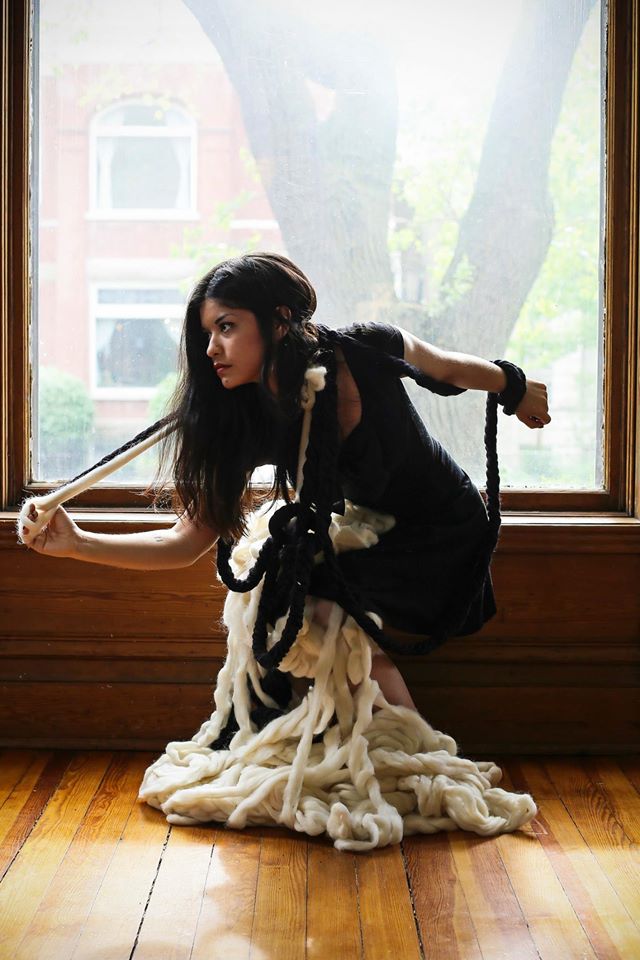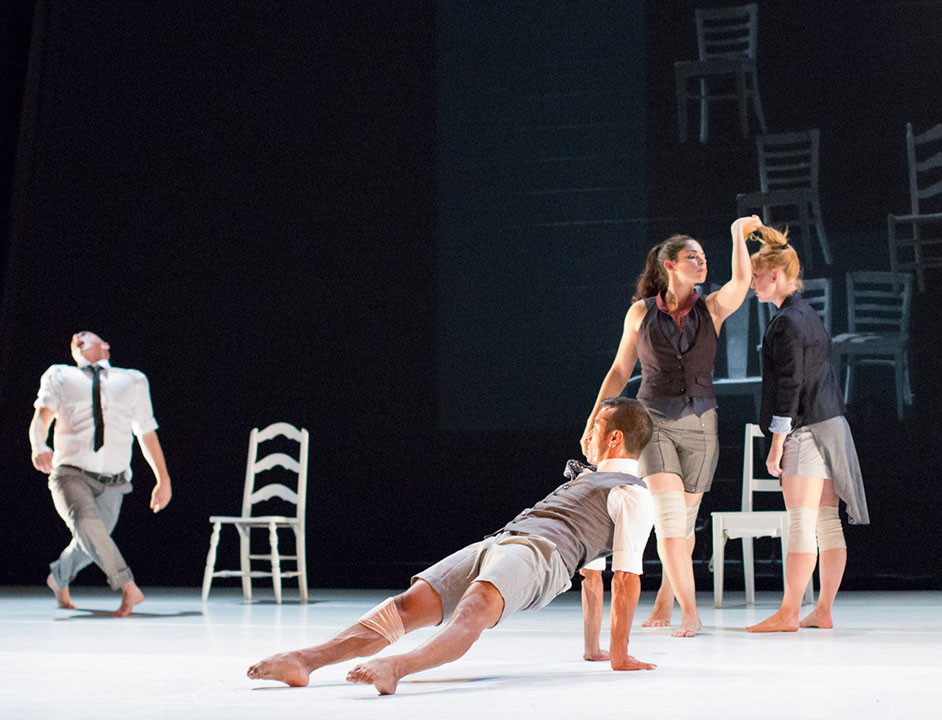Dance Center of Columbia College Chicago alum Hannah Santistevan ’16, a graduate of the Dance Center’s BFA Program in Dance, has joined the ensemble of The Seldoms, one of Chicago’s most innovative dance companies. Starting in January 2017, Santistevan will participate in the creation of “The Making” (scheduled to premiere in fall 2017). She will also join The Seldoms on their trip to Scotland this summer for a creative exchange with visual artists in Glasgow.
As reported previously in this blog, the Scottish collaboration — initiated by The Seldoms’ founder and artistic director, Dance Center of Columbia College faculty member Carrie Hanson — is funded by a $50,000 grant from the John D. and Catherine T. MacArthur Foundation‘s International Connections Fund to allow the company to collaborate with visual artists in Scotland to explore and translate the compositional process of visual art and dance, and lay the groundwork for a new multimedia performance piece. Now in its 14th season under Hanson’s direction, the company is committed to bringing audiences an expanded experience of dance that ignites thought and understanding of real-world issues. With dance at the center of the work, the company’s vision extends to a total action and environment and includes collaboration with practitioners in fields as diverse as architecture, installation, video, sound, and fashion.
A native of Denver, Santistevan is a freelance dance teacher and choreographer outside of performing, specializing in ballet, contemporary, and improvisational practices. She has performed works choreographed by Columbia College Chicago’s Dean of Fine and Performing Arts Onye Ozuzu, Dance Center alum/faculty member Margi Cole, and others.
The Seldoms will also be on tour this month, performing their 2014 multimedia dance theatre work Power Goes at the Contemporary Dance Theater in Cincinnati on January 20-21 and the University of Wisconsin-Madison’s Union Theater in Madison, Wisconsin, on January 27-28. Power Goes takes its title from a quote by former president Lyndon B. Johnson — “Power is where power goes” — and uses the figure of Lyndon Johnson to explore how power is present in intimate exchanges and collective public actions alike, in the past and in the present. From LBJ’s contentious 1960s context of civil rights protest and the Vietnam War, Great Society programs and struggles over the future of America, to our present moment of struggles over equality and rights, social change and citizenship, war and peace, political stalemate and the yearning to move America forward or perhaps bring it back to something that got lost, Power Goes offer perspectives on the performance of power and how power performs.









